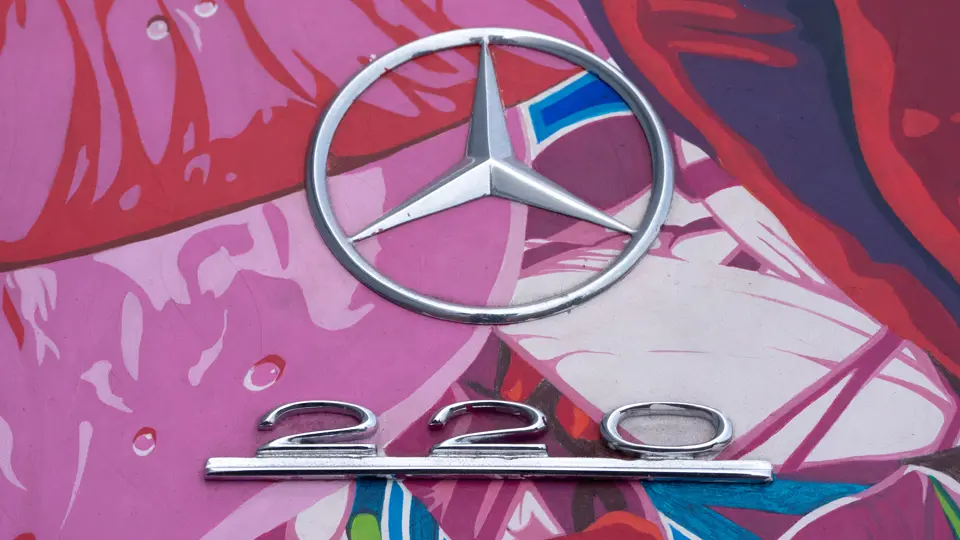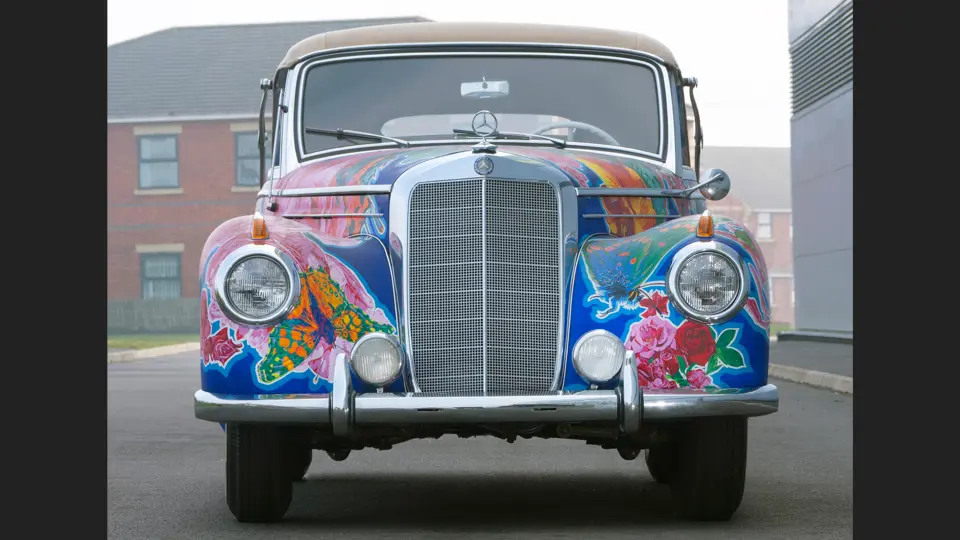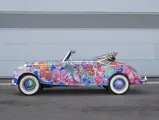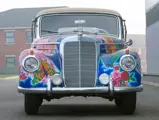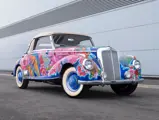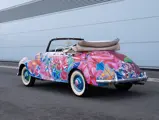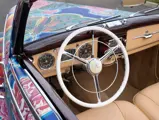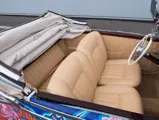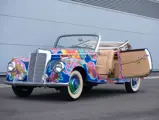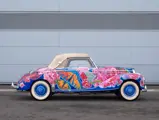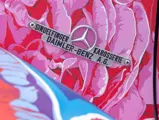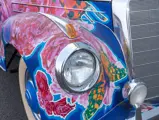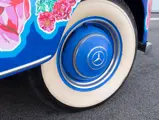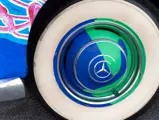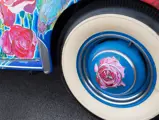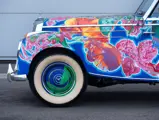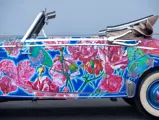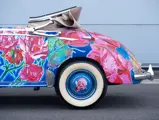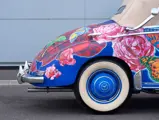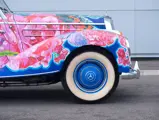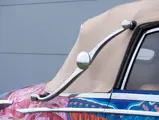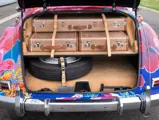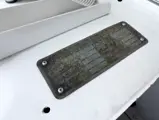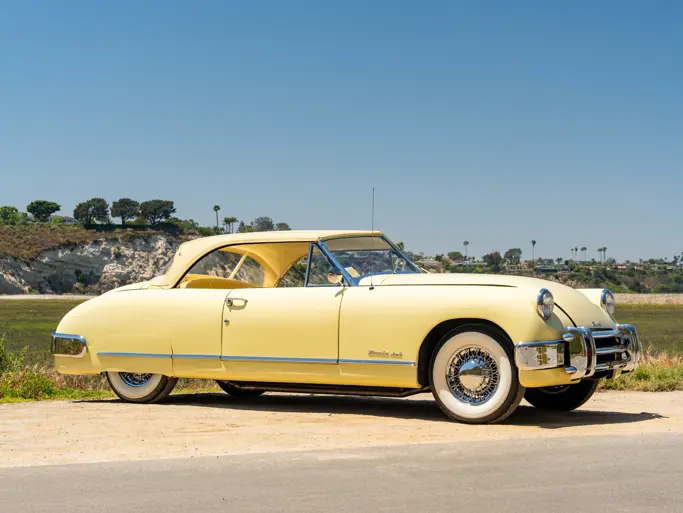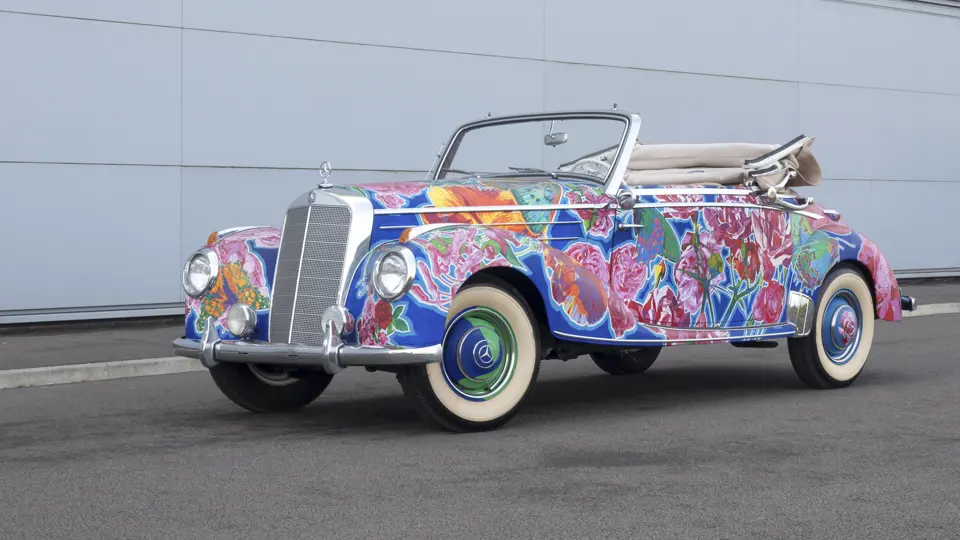
1952 Mercedes-Benz 220 Cabriolet A "Earthly Paradise"
{{lr.item.text}}
$117,600 USD | Sold
{{bidding.lot.reserveStatusFormatted}}
- Part of artist Hiro Yamagata’s renowned “Earthly Paradise” series
- An extraordinary, hand-painted art car based on a restored 220 Cabriolet A
- Exhibited internationally in the mid-1990s
Los Angeles-based silkscreen artist Hiro Yamagata can rightfully be called the foremost modern restorer of Mercedes-Benz 220 A Cabriolets, but not in the conventional sense. Since the early 1990s, Yamagata has worked on more than 20 of these cars, sourced from around the globe. Each was carefully restored by expert craftsmen, down to their properly finished bodywork, correct upholstery, and accurate interior woodwork and radio hardware. Once the cars were completed, however, they were not driven or shown at concours events. They were used, quite literally, as blank canvases for Yamagata’s artistic vision.
The bodies were finished in white matte acrylic and their surfaces roughened, providing a primer coat for Yamagata’s bumper-to-bumper artwork, each car with a unique design, which art critic Sam Hunter said “reversed the symbol of the car as an industrial, automated machine and brought it into harmony with nature.” Designs of bright, beautiful birds, flowers, and other nature scenes create an exotic tableau that recalls vivid jungles and tropical nights. “Some people say the scenes I paint are dreamy or psychedelic,” Yamagata said. “I say, if you look closely at plants and animals—on land and in the ocean—the natural world is overflowing with psychedelic colors and creatures. I’m just painting from nature.”
Yamagata’s art cars, collectively known as the Earthly Paradise series, have been displayed at the Los Angeles Municipal Art Gallery, at the 46th Venice Biennale in 1995, and on a tour of European museums that lasted through 1997. Many of these exhibitions were co-presented with famous Beat poet Allen Ginsberg, who authored books with Yamagata to complement the Earthly Paradise series.
Taking in the vivid floral patterns adorning the 220 A Cabriolet offered here gives the sense of peering through a kaleidoscope, the large butterflies seemingly ready to flutter right off the bodywork. After completion, the car, named "Butterflies and Roses," was exhibited at the Vienna Museum of Applied Arts.
Purchased by the current owner in 2016, this work of art has been admired in his collection as a static display piece. Recent work has been completed to return it to running condition, but it remains foremost an important part of Yamagata’s vision around the meeting of the mechanical and natural worlds. Pieces from Yamagata’s Earthly Paradise series rarely come to market and this example is one of the most attractive of all his works.
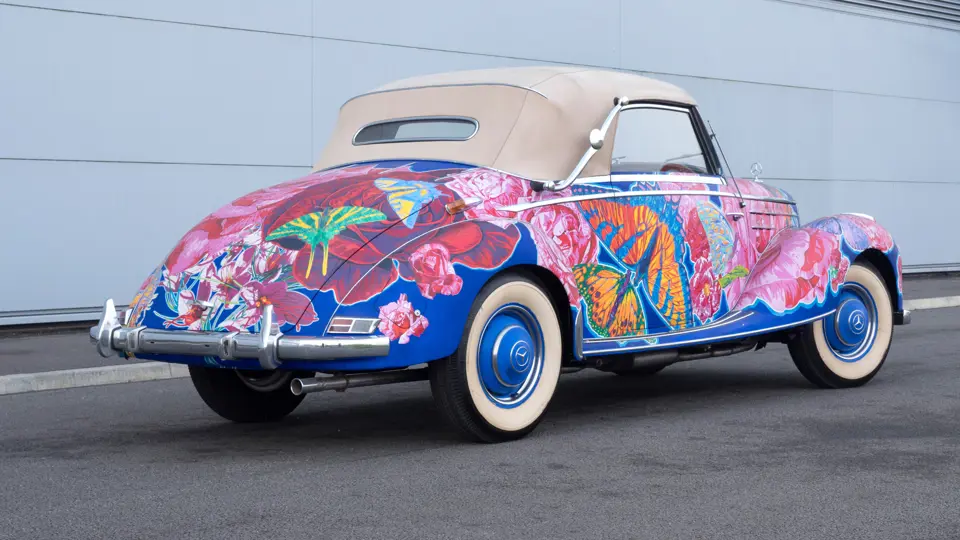



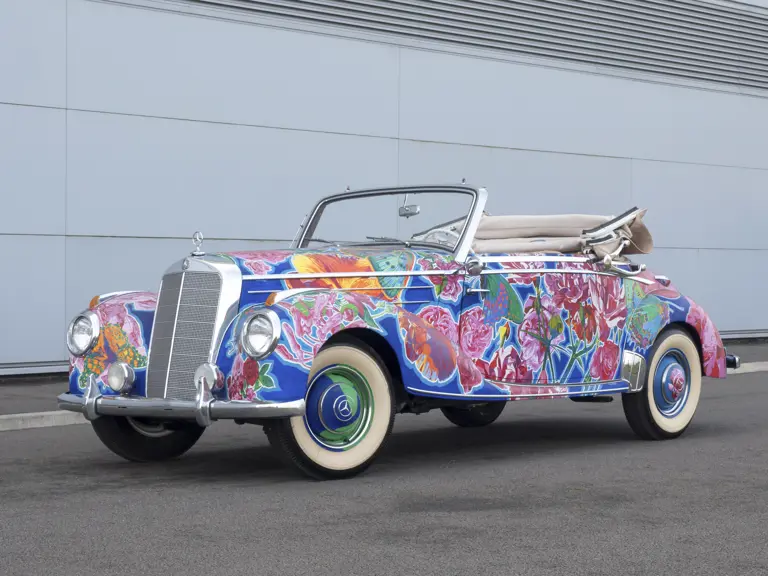
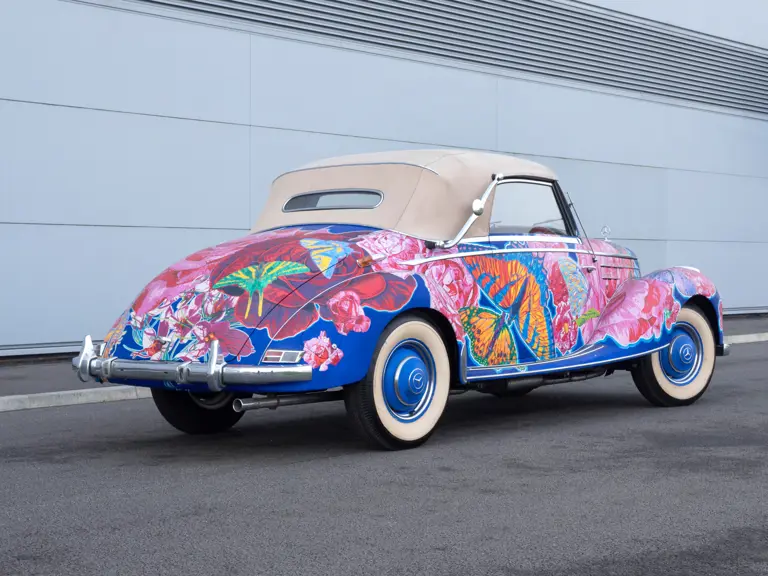
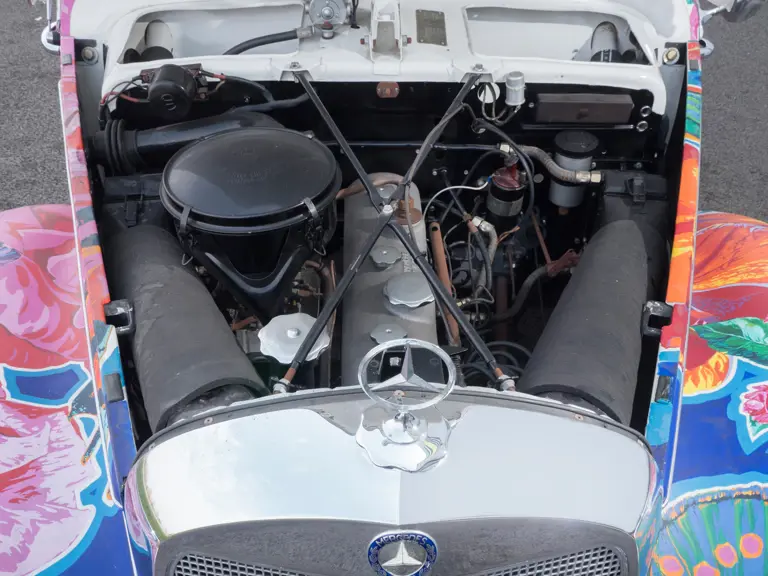

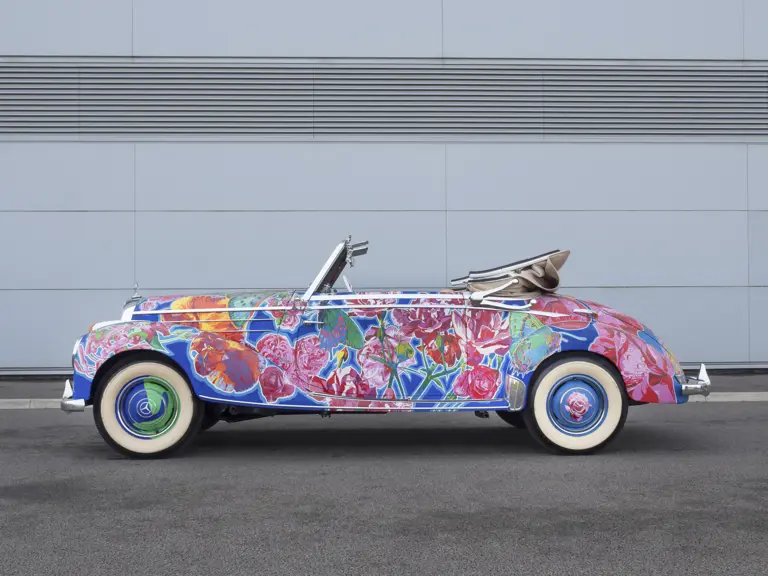
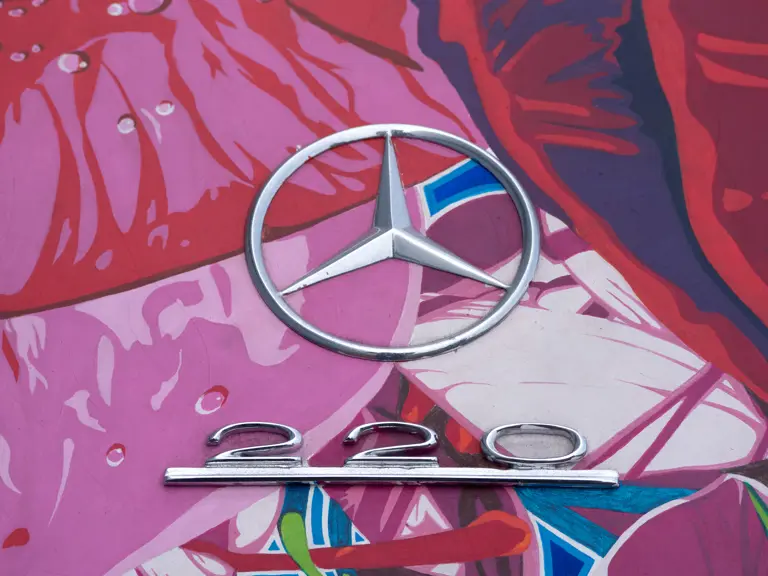
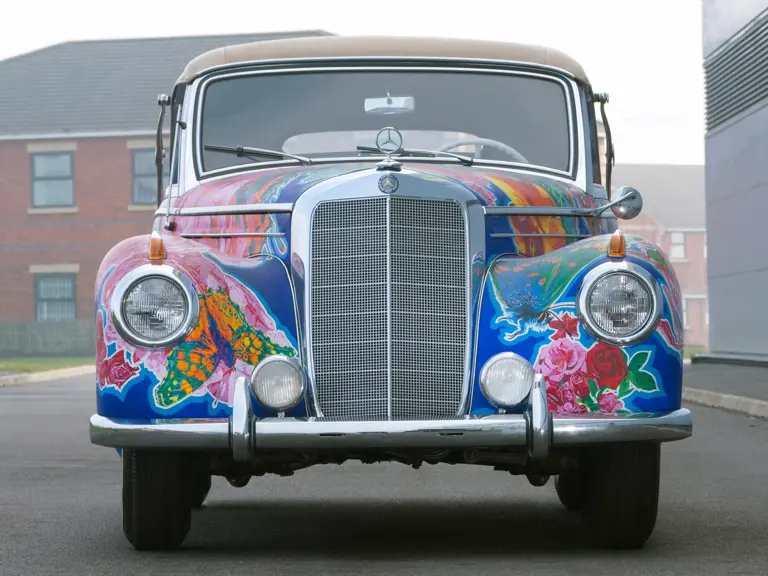
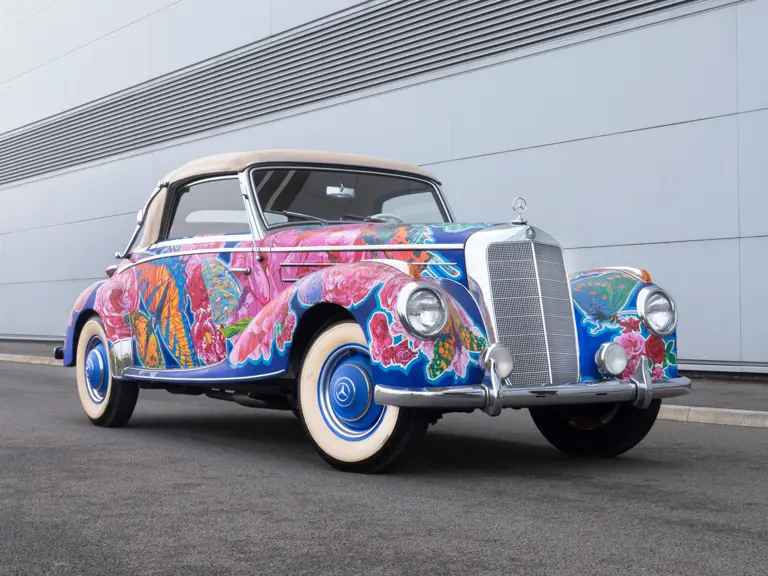
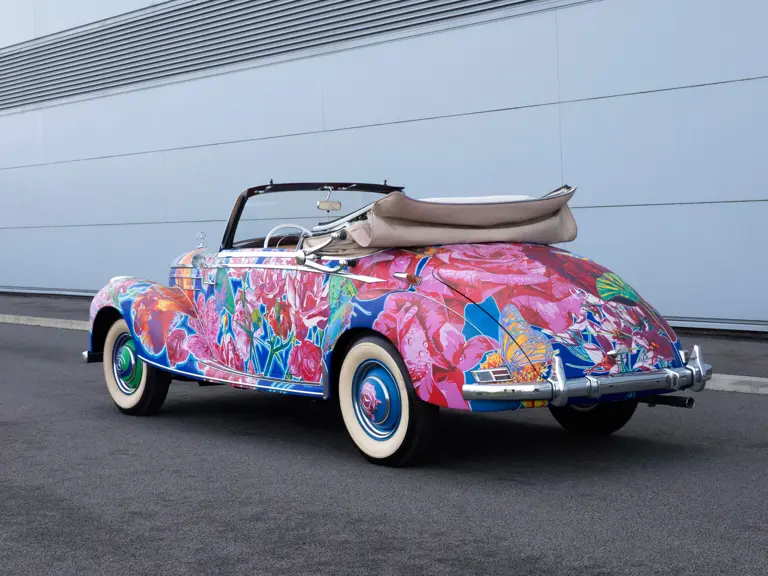

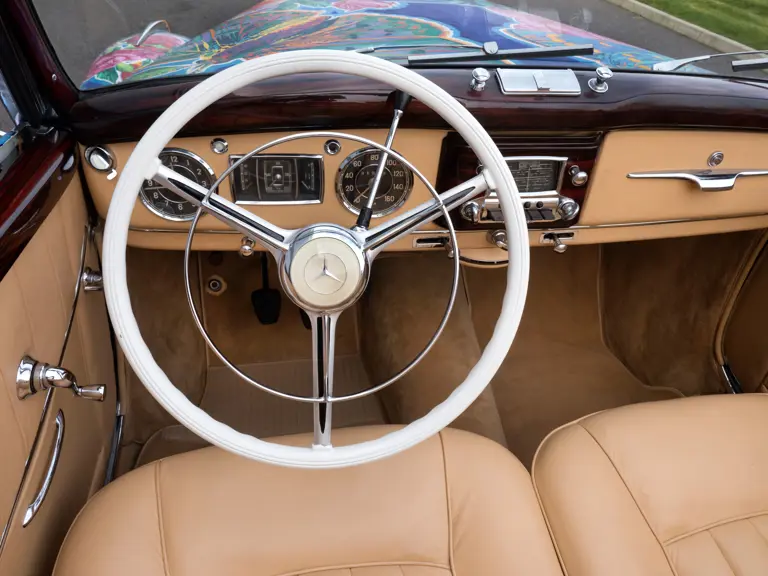

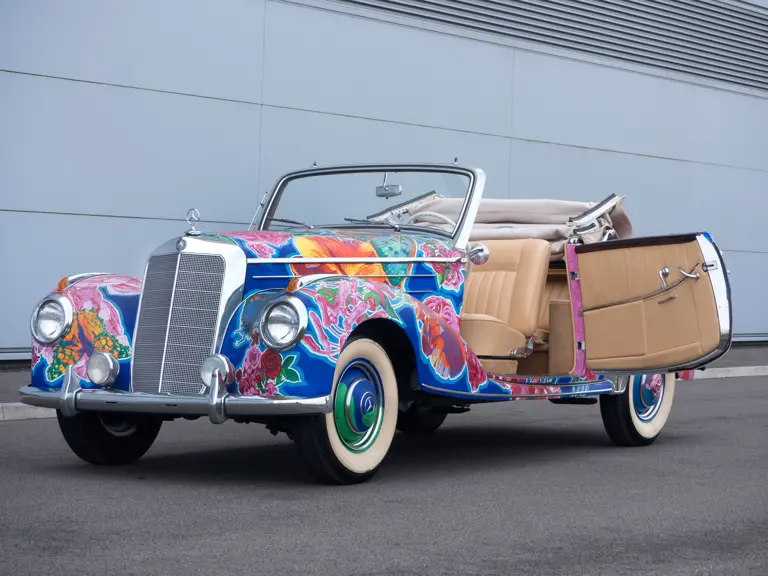

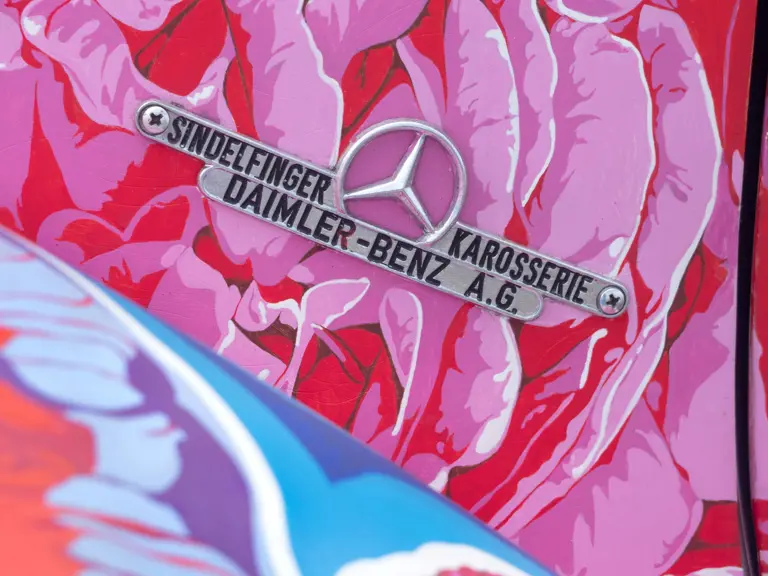
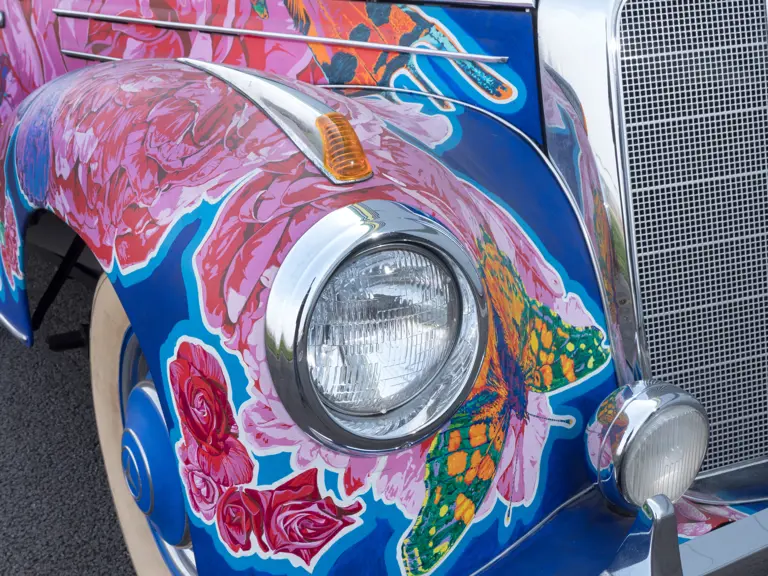
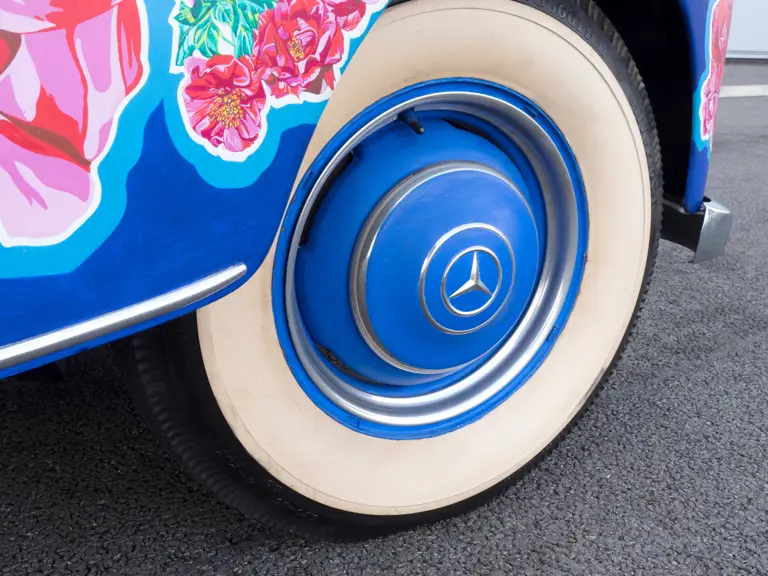
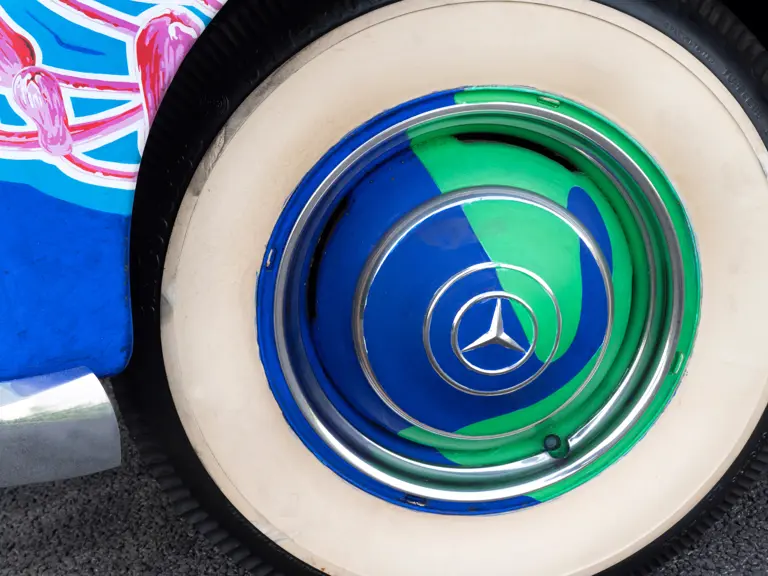
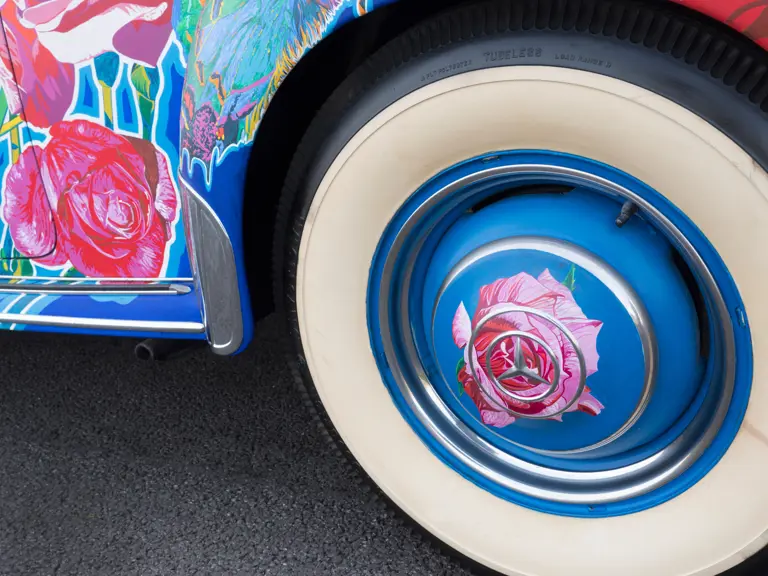

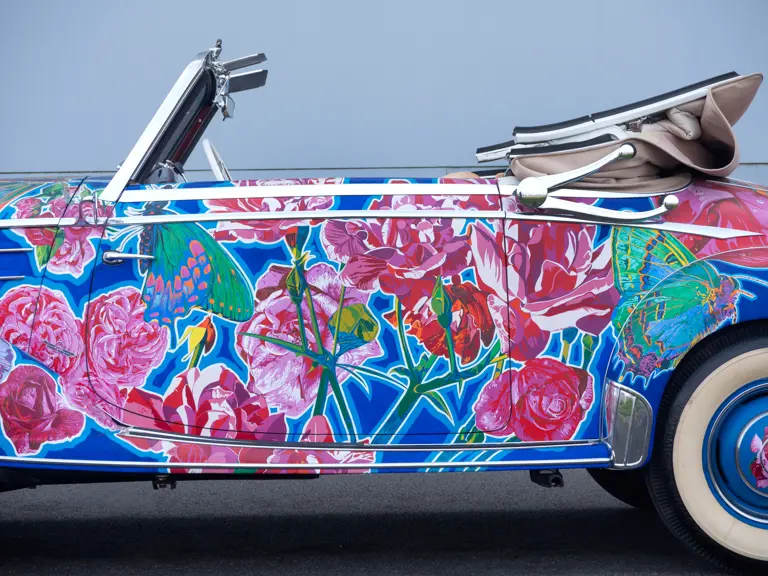

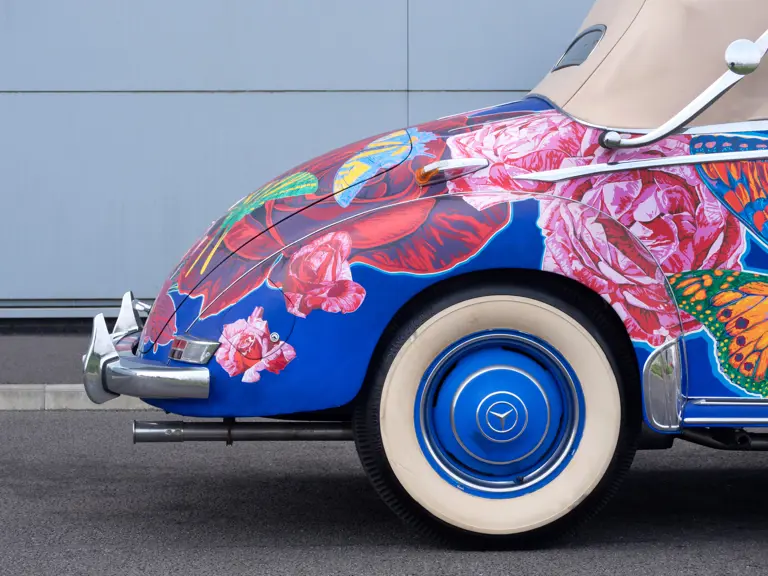
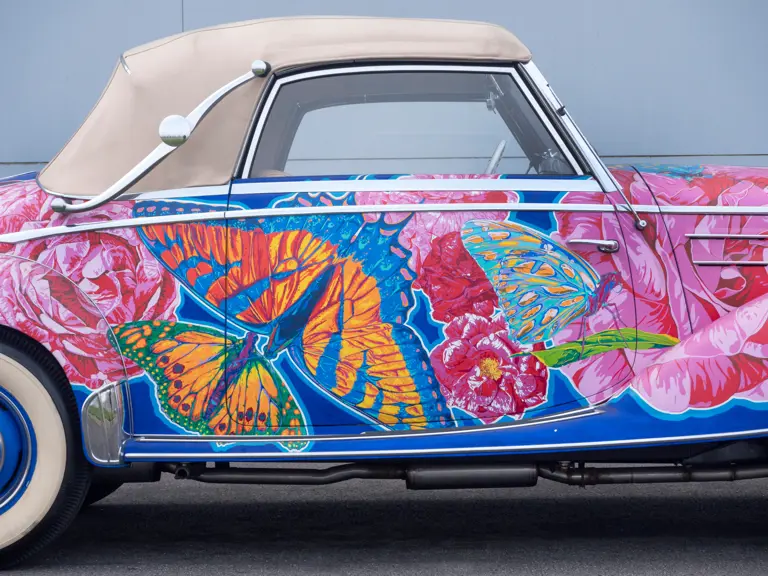
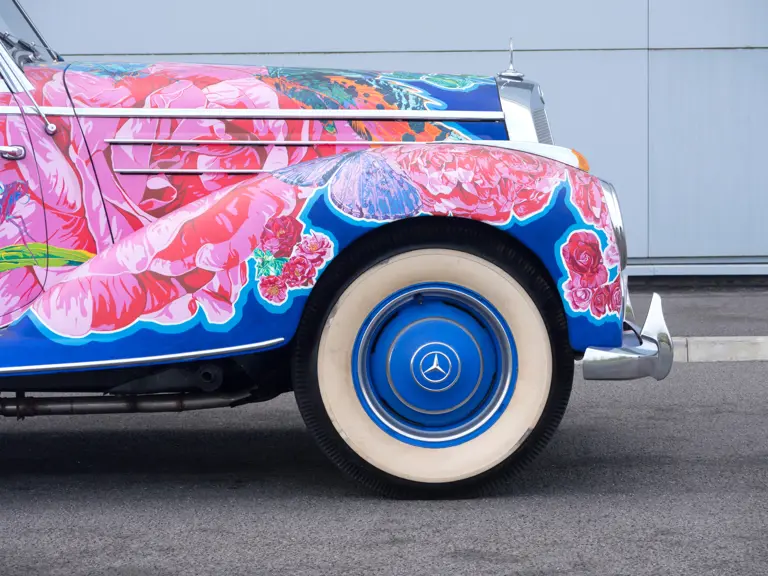
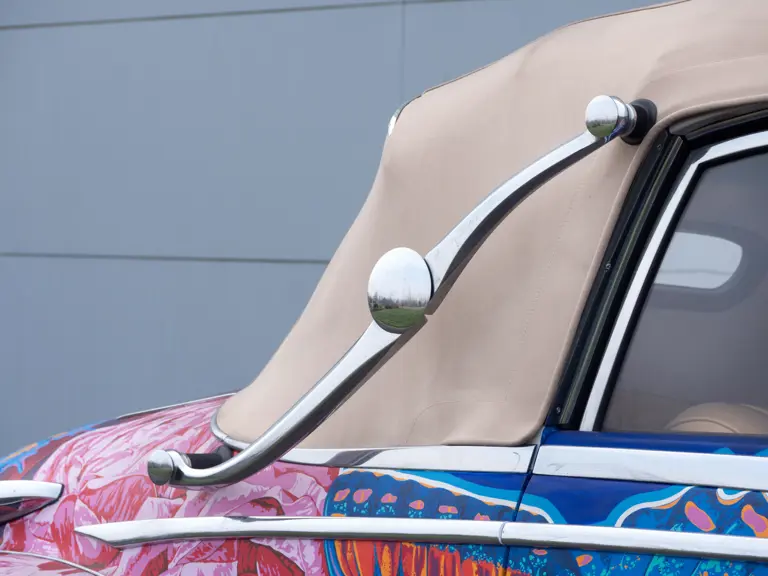
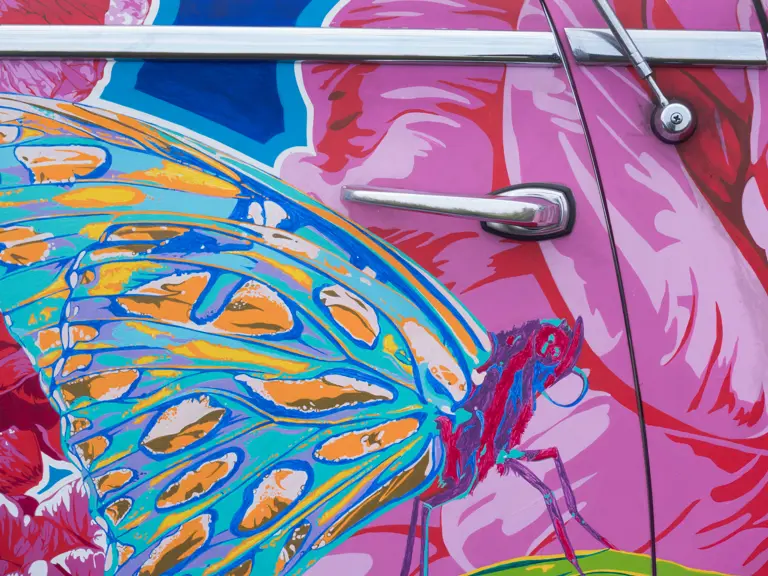
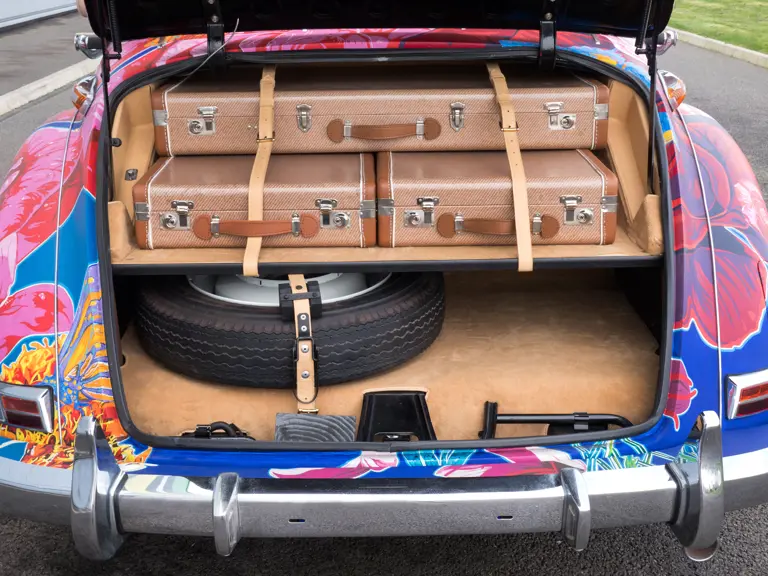

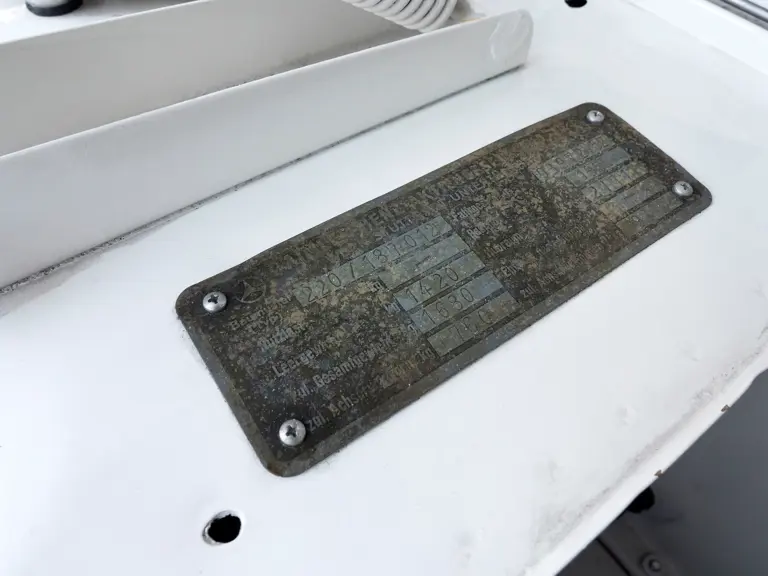
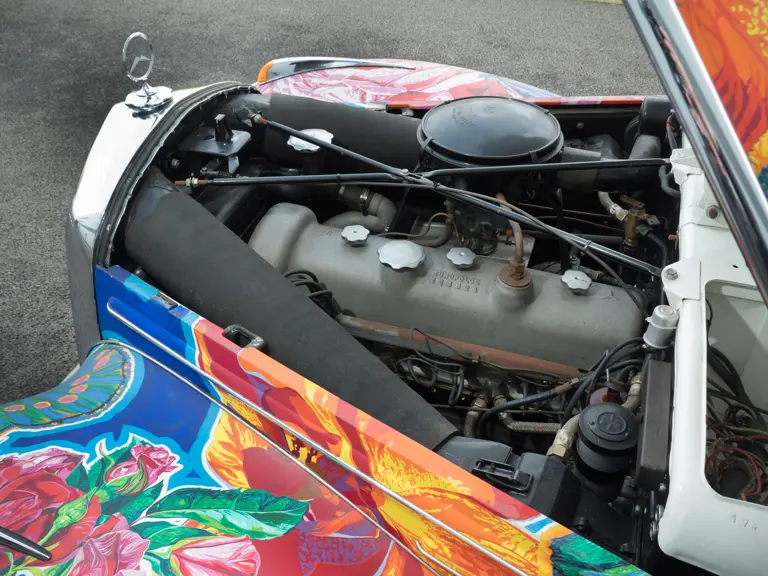
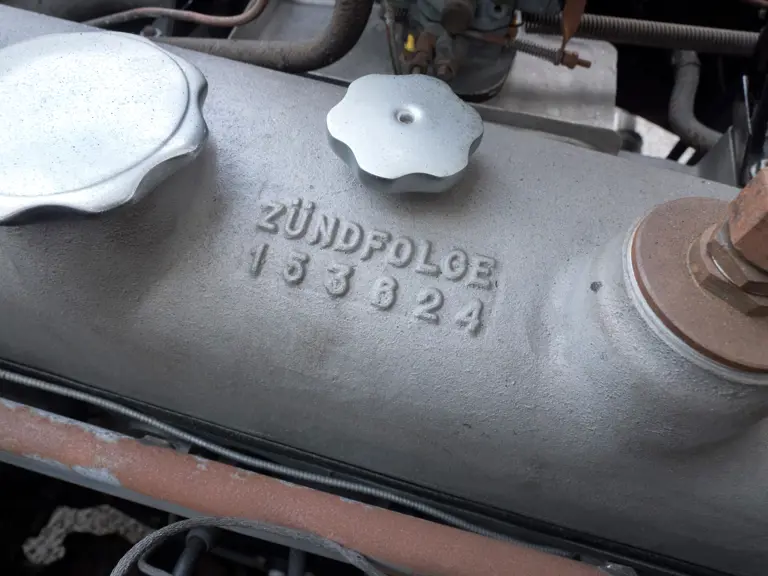
 | Monterey, California
| Monterey, California

